Hot Cross Buns
This week: Hot Cross Buns; Covering up; More woodwork; Plants and flowers; Weird weather;

Easter weekend here always seems a little strange to me.
The week in the lead up to Easter has huge religious significance, and yet there are no public holidays, not even for Good Friday.
Easter Monday is the only public holiday, but Tuesday is a slow day as well.
So with Easter Sunday, Easter Monday and Tuesday being slow days, it has really taken some effort to get into my usual working pattern again.
On Wednesday morning I helped neighbours to move three cubic meters of topsoil into their garden, ready for landscaping.
That together with thunder and hail on Friday it has meant a short working week.
Please also note that next week’s Blog will be published a day later than usual, on Sunday the 23rd April rather than our usual Saturday evening slot.
Hot Cross Buns
Hot cross buns
Hot cross buns
One a penny, two a penny,
Hot cross buns.
Give them to your daughters,
Give them to your sons.
On Sunday morning I was up early to make a batch of Hot Cross Buns.
Readers in Commonwealth of Nations countries will know immediately what I am talking about because the Hot Cross Bun was exported, alongth with many other traditions, during the colonial period and the traditions have continued.
Many countries around the world have special foods which are eaten at particular times of year. These are usually linked to religious festivals, but can also be secular too.
Although here in Dalmatia, Fritule is a traditional festival food, across Europe, the Hot Cross Bun is not really known or recognised.
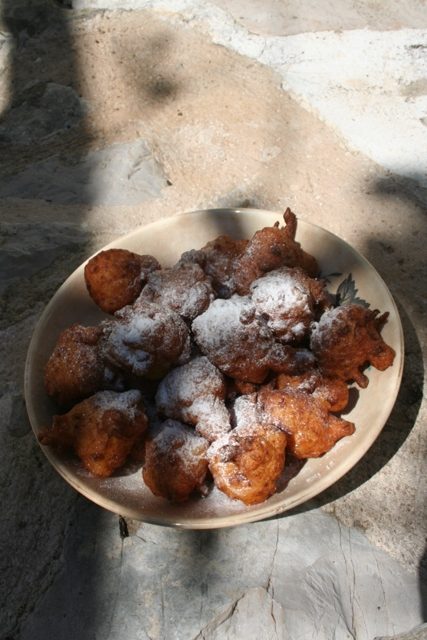
Elsewhere in Europe a sweet bread or cake, using similar dough to Hot Cross Buns, is also sometimes made for Easter.
You certainly cannot buy them in the local small bakeries or the supermarkets n the island.
I do like a nice Hot Cross Bun, warm, straight from the oven, or sliced and toasted as a breakfast accompanyment.
They are a bread based dough. So yeast, strong white flour, warm milk, butter and sugar are kneaded into the dough.
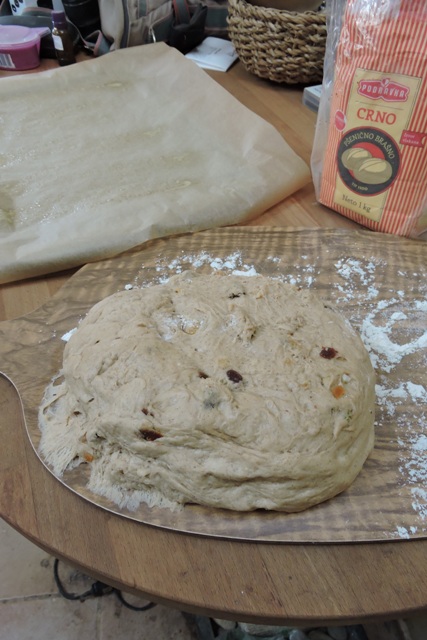
To this dried fruits (raisins and sultanas) and cut peel are added, followed by ground allspice and cinnamon, with just a pinch of salt.
Once mixed, the dough is allowed to rest and rise. After a final knead, it is cut into the required small round bun shapes with as cross on top and placed on a baking tray to rise for a second time before cooking.

Finally a glaze is brushed onto the newly cooked buns and they are ready to serve.

After making a couple of batches, I took plates of fresh Hot Cross Buns to neighbours, for them to enjoy with coffee – which they did!
Covering up
During my spring clean, I was surprised that a number of my books have faded quite badly on my book shelves.
They are not in full or even partial sun, but each book shelf catches a few minutes of morning or evening sun, through a Velux ceiling light.

To reduce the solar gain, I installed a Velux blind over the window a few years ago.
However even with the blind reducing the sunlight, there are some noticeable changes in the colours of the dust jacket covers where they have been exposed.
This week I prepared some simple wooden lats to fit to the top of the bookcases. After cleaning up the timber in my thicknesser, I then used my Bosch palm router to round all the edges.
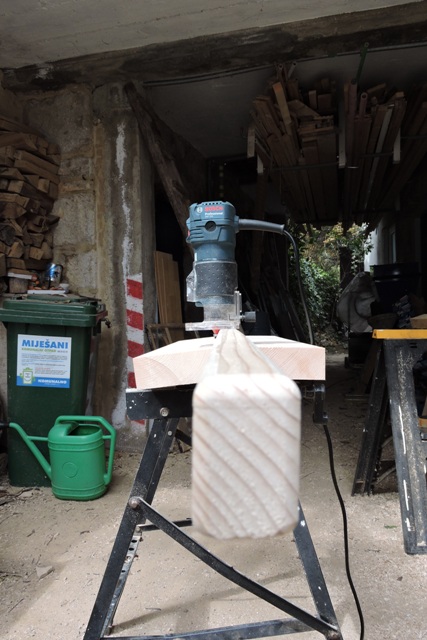
I am using some very simple brackets to hold the top lats in place.
When I was shopping a couple of weeks back I found a shop selling material from large rolls. Unfortunately the rolls were all the same width, which doesn’t cater for the different widths of my shelves.
This has meant cutting some of the pieces to size to fit.
I’ve fixed the material to the wooden lats with a staple gun at the top. But the bottom is more of a problem.
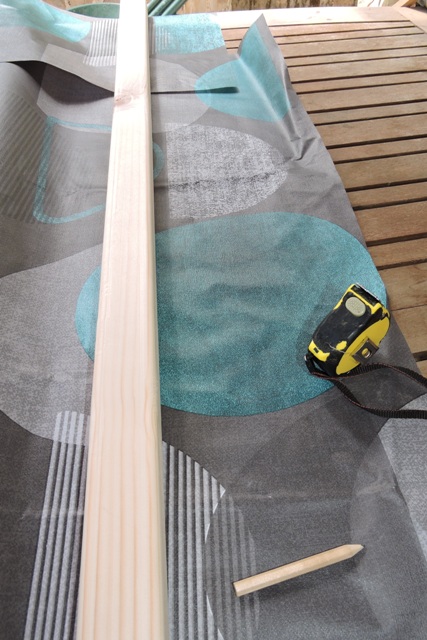
I wanted some round wooden moulding to make it easy to roll the material up and down. However finding anything remotely suitable on the island has not been possible.
So the finishing will have to wait until after I go to Split next week.
I have fixed the top lats in place and left the material dangling. This will at least afford some protection to the the books until I can get the rest of the needed materials.
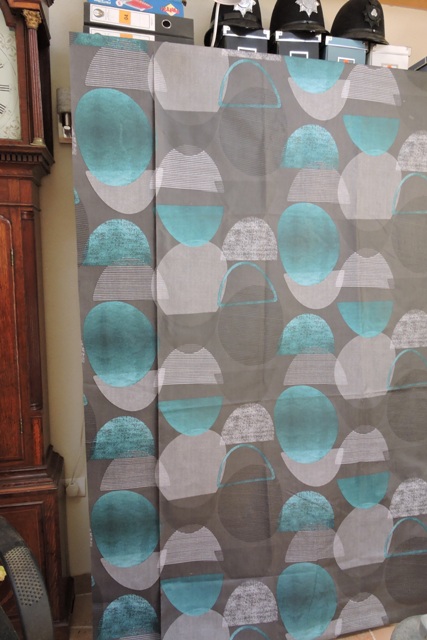
Having removed a winter’s worth of dust and smuts from the fire, I will see if the covers will make a difference next winter too.
More woodwork
Slowly but surely I am getting close to laying the hardwood floorboards in the hall above the Konoba.
I know it may sound odd to have a hall on the first floor of a building, however this is because of how building usage has developed here.
The ground floor of the old buildings was where the animals were kept. Be they donkeys, pigs, chickens, a few goats and even rabbits, or a mixture of all of them.
It was also where the grapes were turned into wine, olives were kept before being pressed, vegetables were stored for the winter etc. So the ground floor open plan rooms, known as the “Konoba” were very much working spaces, without any frills.
The people lived on the upper floors, hence my main entrance to each of the buildings is on the first floor. This is also why there were no steps linking my Konoba’s to the living spaces.
I mean who wants the donkey, a goat and some chickens joining you in the kitchen for lunch?!
I have had the hardwood flooring for some time, and it has been stored wrapped in the plastic it came in, in my covered wood storage and seasoning area.
When I brought the boards down, I found that some insect had laid their eggs in the grooves on the back of the boards.
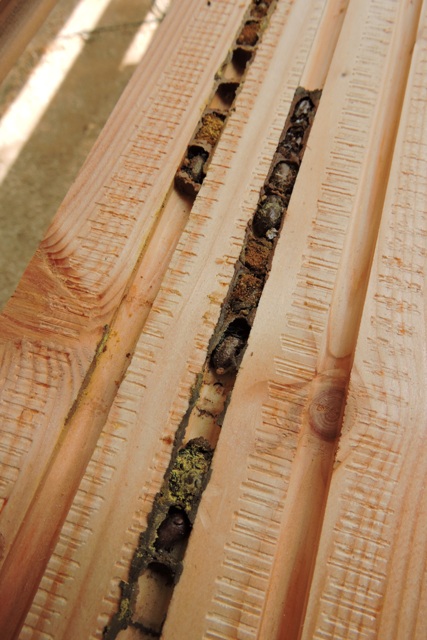
It’s not difficult for an insect to find their way into the plastic wrapping.
This has happened over several years because many of the egg chambers were empty.
Some other eggs hadn’t hatched and had died. But what I didn’t recognise was what the insect was that had laid the eggs. The egg cases were unlike anything else I have seen.
Examining one set of egg cases, where there were still chrysalis in each chamber, I opened one case and found that there was a small bee inside.
Usually we think of bees being cooperative and communal insects, living in hives and all working together for the common good.
There are of course the solitary bees, like Bumble Bees and the big black Carpenter bees I have here too.
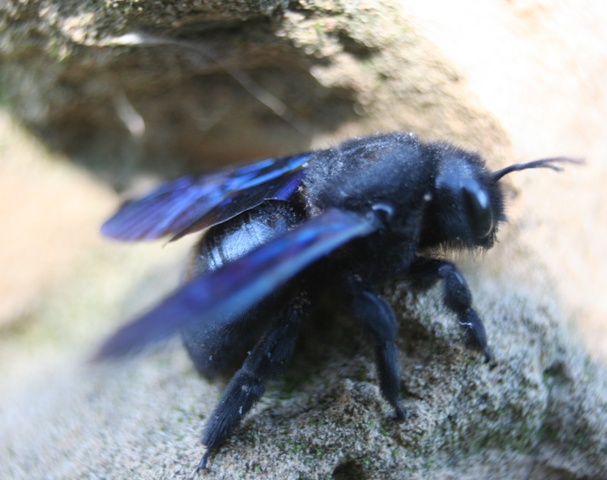
But as well as these, I see large numbers of other different bee species. These are often quite small.
Clearly they are not honey bees, but they are darting between blossom and generally buzzing about.
These eggs are obviously from one of these other bee species.
I cleaned out the empty cases and the ones which were obviously dead, but the cases with the live larvae, I have left to hatch.
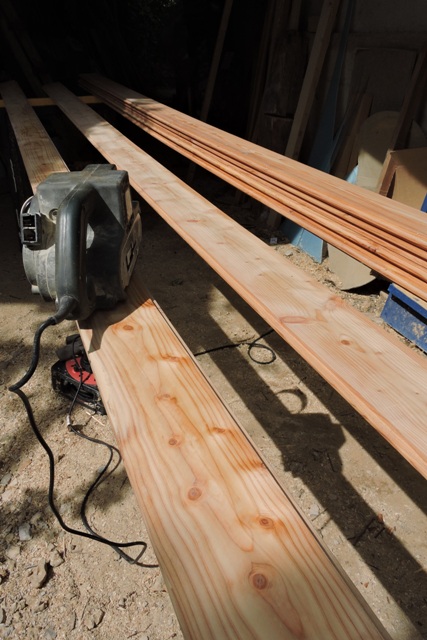
On the top surface, I ran my sanding machine across the top to clean the surface ready for treating with varnish.
This was the job that I actually brought the floorboards down to carry out.
I just hope that the live larvae hatch quite soon…
Plants and flowers
The days and weeks are steadily moving forward towards summer. Although looking at the weather, it still does not feel even very spring like on some days!
The cold weather seems to have had a positive effect on a lot of my fruit trees. The Drupes especially are covered in blossom.

The Myrobalan Plum seems to have set a lot of fruit again this year. Already the small, red plums are forming and clearly visible.
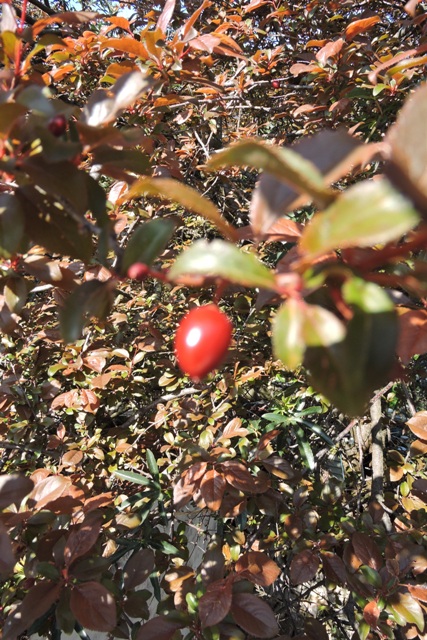
But it is not only the fruit trees. This week my Common Lilac, Syringa vulgares, has come into flower. This shrub or small tree is a Balkan native and can be seen on hillsides around my home as well as the examples I have in my garden.
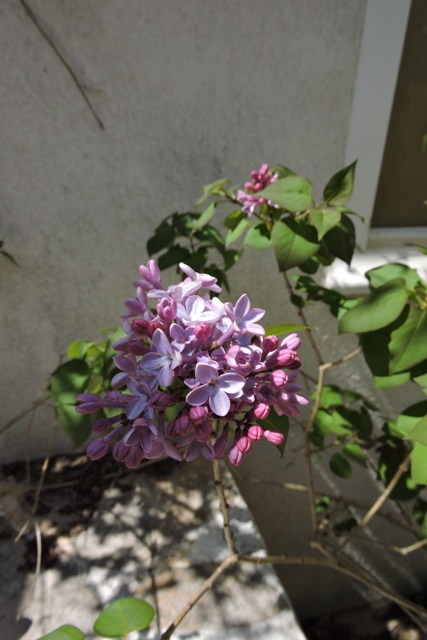
That said, not everything is rosy in the garden though.
On one of my walks round, I found that my Mimosa tree is dying. Mimosa is from the Acacia family and in several places that have a Mediterranean climate, it is classed as an invasive weed.

Early in the spring, my tree was covered in yellow flowers. These were followed by the bright mint green leaves.

Yet in the space of a couple of weeks, the leaves have died and most have fallen.
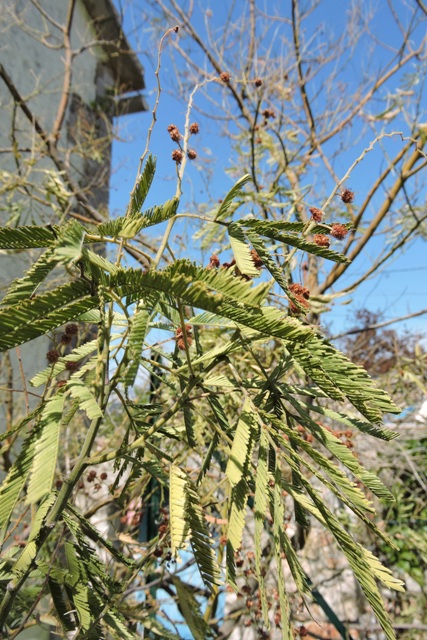
Northing around the tree has been affected, and there are no obvious signs of what has caused the dieback.
I have been able to save some seed from this year’s flowers and I will try and grow a new plant from them.
Sadly, I think that there is little I can do for this tree though.
It was one of the first trees I planted, because it has the earliest flowers in the year. They appear here in Dol in January. So I am sad to have lost it.
Weird weather
Like everywhere, Dol continues to be affected by Climate Change.
By this point in April, we should be seeing an average daily maximum temperature of 20ºC. However at the moment, we are struggling to see an average of 12ºC.
On my way back from coffee on Friday morning, I could see the black clouds of a storm approaching the island from the west.
Looking at Blitzortung, the lightning detector web site, it was quite an active storm. The rainfall radar was also painting areas of intense precipitation within the storm.
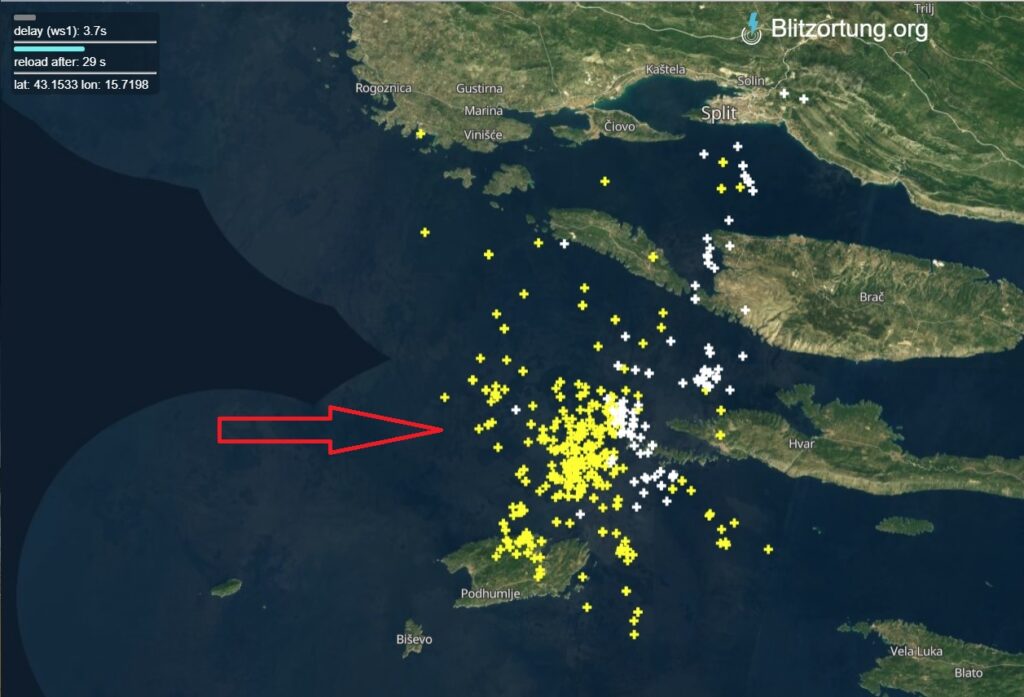
As the storm got closer, I went round removing plugs from sockets in case of lightning strikes to the island’s electricity infrastructure.
Then I watched as dark sheets of heavy rain slowly enveloped local landscape features.
Soon large hard hail was rattling on the roof tiles and frightening the felines. Very quickly the ground was covered in white.
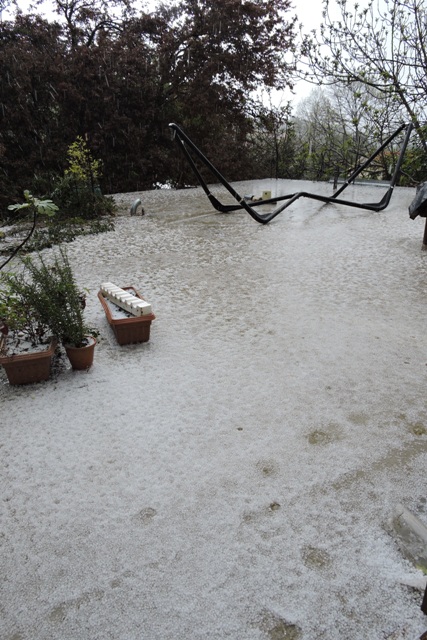
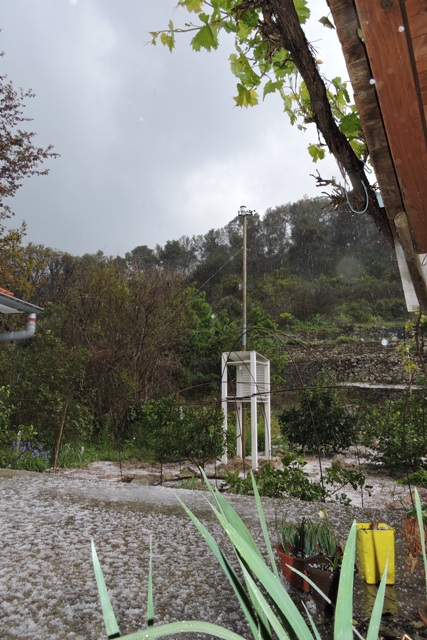
Some of the hail was 5mm in diameter, so it had been rattling up and down inside the convective storm cloud, increasing in diameter with every circuit, for some time.
The storm soon passed, but leaving the white evidence of its passing everywhere. Flower heads have been severed and tender plants, like lettuce have been completely shredded.
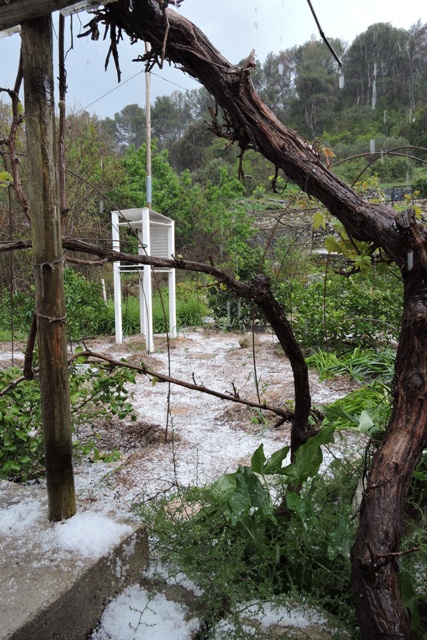
Because it was a cold storm, the temperature remained depressed for the rest of the day and it took quite some time for the hail to melt.
Thunderstorms are not unusual here. They occur throughout the year, but seldom do we have this kind of hard, damaging hail. NCG